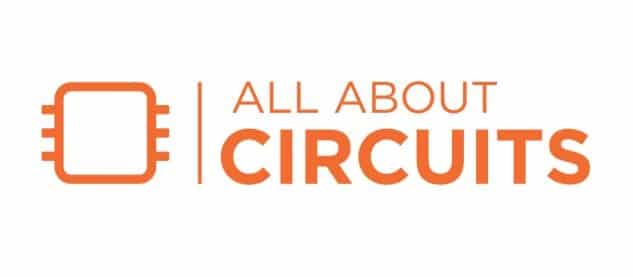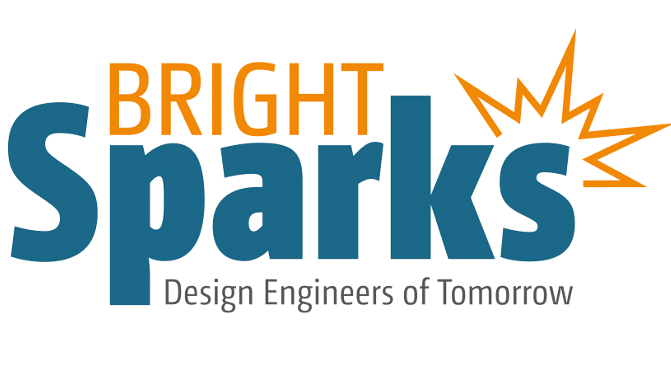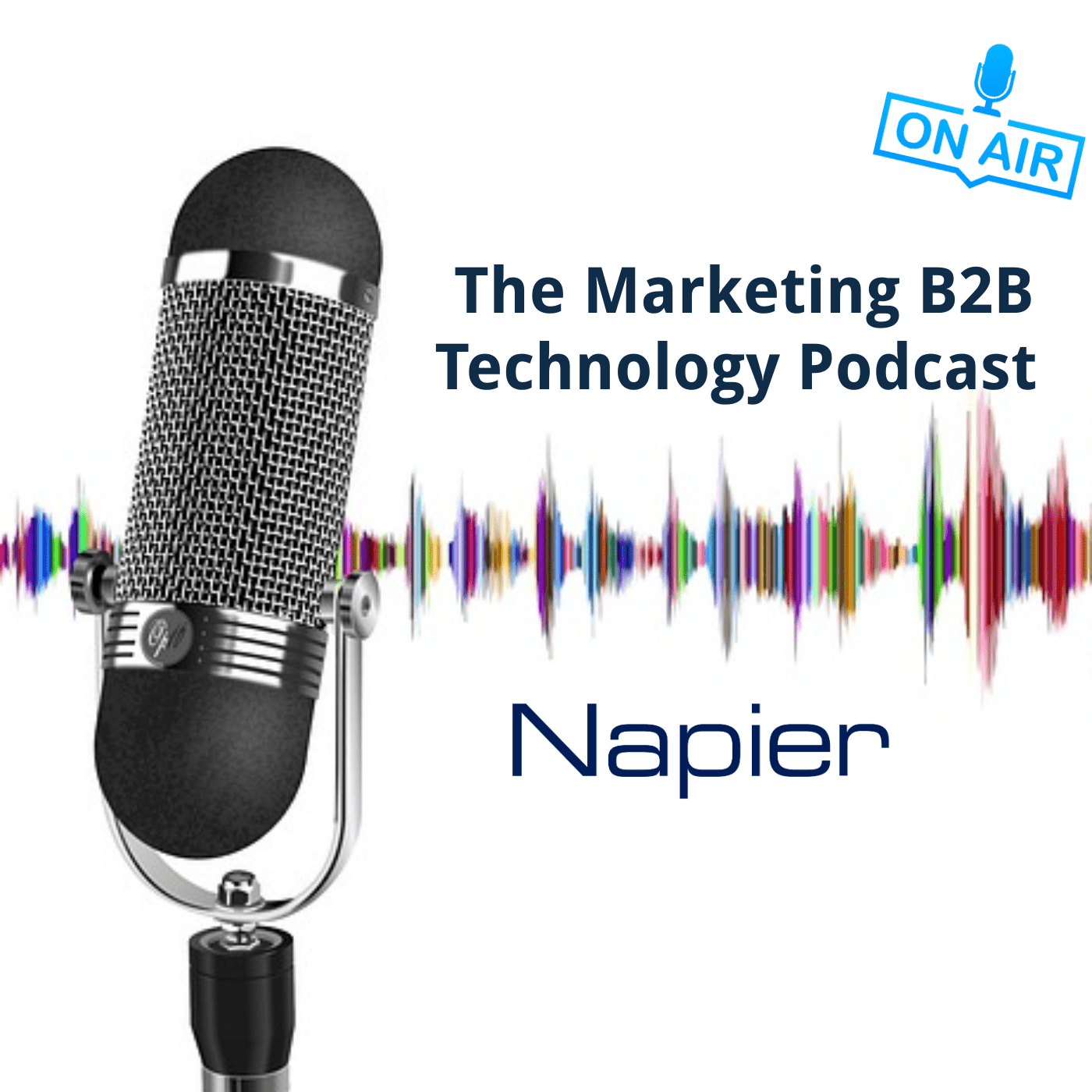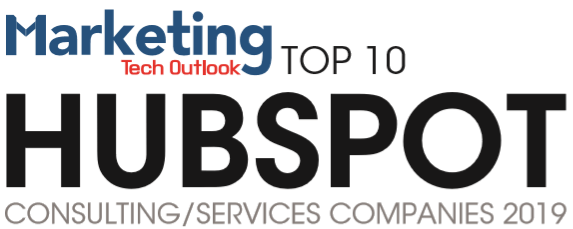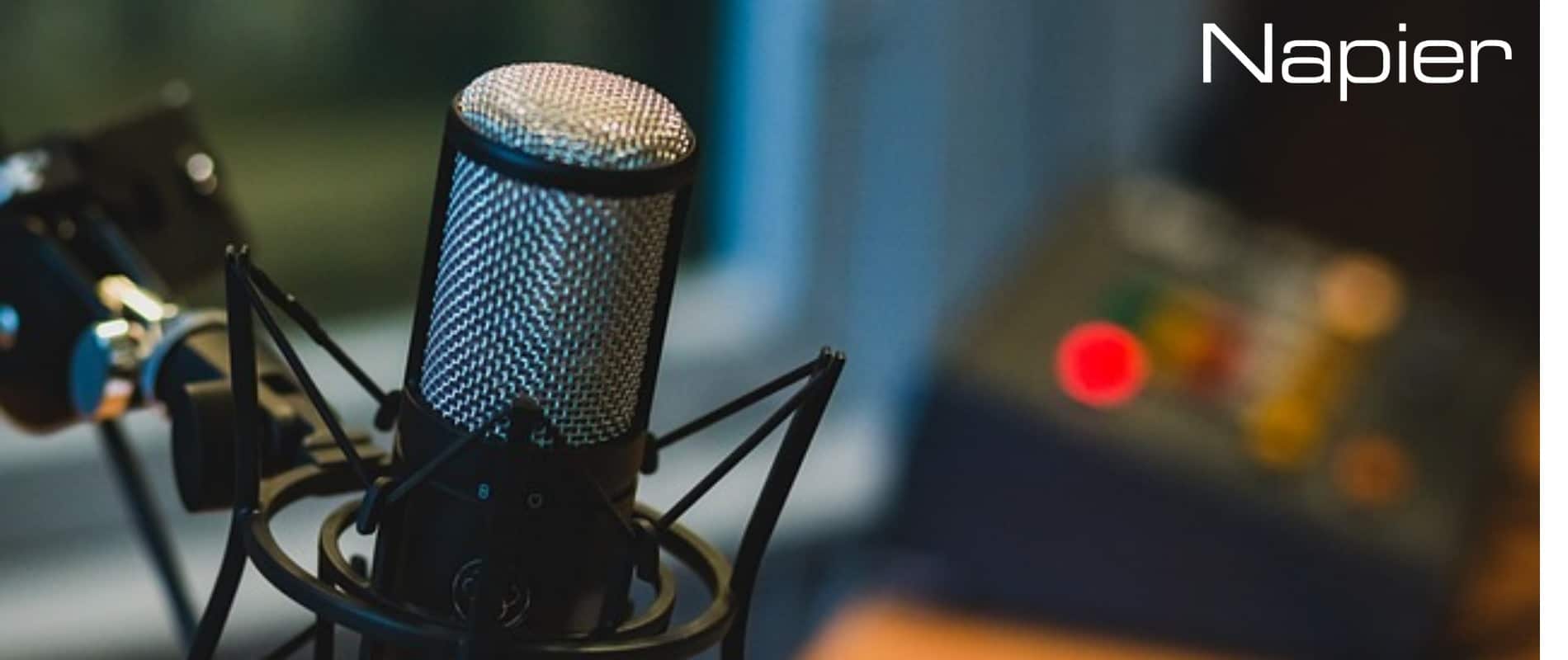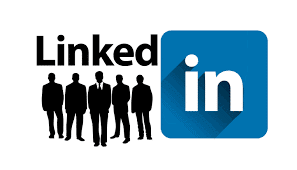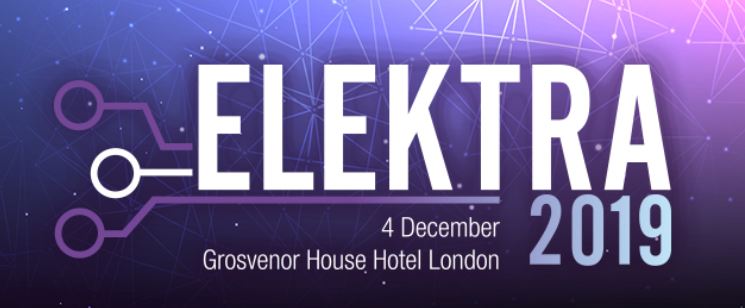ETN Announces Embedded Conference Finland for 2020
ETN has announced its 4th annual Embedded Conference Finland for 2020. Taking place on Thursday 4th June at the Lighthouse in Akavatalo in Helsinki, this years conference will focus on the topics of embedded devices and code security.
The event will feature a technical programme and keynote speakers, with Jarno Limnéll a cyber security professor at Aalto University already confirmed, who will provide an introduction to security and why it is such a critical factor.
ETN are currently looking for sponsors, presenters and exhibitors, so if you'd like to get involved, get in touch with Editor-in-Chief Veijo Ojanperä at vo@etn.fi, or Sales Manager Anne-Charlotte Sparrvik at ac@etn.fi for more information.
EETech Launches New IC Design Centre
EETech has unveiled the latest addition to its All About Circuits (AAC) website, with the introduction of its new IC Design Centre for IP Cores.
The IC Design Centre follows the recent redesign of the AAC website, and will provide up-to-date, open-source technical content and design tools that will speak to engineers at any level of IC design.
With IC Design information often being challenging to find without widely available technical resources, EETech reached out to experts to bring the centre to life. “Expanding to IC design has allowed us to work with specialists in the field to provide engineers with high-level, extremely accurate information built by their peers,” commented Kate Smith, Director of Digital Content for EETech “With their help, we have created an accessible, comprehensive, and in-depth repository of information for IC designers.”
In addition to technical content, designers will also have access to a vast open-source library of IP cores to aid in the IC design process.
For further information and to view the IC Design Centre, please click here.
Electronics Weekly's BrightSparks Programme 2020 Opens Call for Entries
Electronics Weekly, in partnership with RS Components, has announced that its 2020 BrightSparks programme is now open for entries.
Electronics Weekly, which celebrates its 60th birthday this year, formed the BrightSparks programme back in 2017 to celebrate the achievements of the most talented young people in UK electronics. With the aim to showcase the young talent within the industry, the BrightSparks programme is looking for people to nominate themselves, or a deserving colleague or friend between the ages of 18 and 30 who are already making a difference in the first years of their working life, or who are still studying at college or university and will be the people shaping UK electronics in the years to come.
A selection panel featuring judges from across the industry will shortlist the entries on Tuesday 17th March 2020 at RS Component's King Cross HQ, with the awards ceremony taking placing on Monday 4th May at the IET at Savoy Place.
Here at Napier, we are firm supporters of celebrating success at any stage of your career, and we think its great to see Electronics Weekly inspiring the next generation of engineers. With the industry's well-publicised skills gap, this programme is a great way to raise awareness of the fantastic work young engineers achieve, and ultimately encourage engineers for the future.
For further information on the Electronics Weekly BrightSparks programme and how you can enter, please click here.
Armitage Communications Welcomes Amy Moqbel as Senior Account Manager
Armitage Communications has welcomed Amy Moqbel to the team as Senior Account Manager.
Amy joins the team with 13 years of marketing experience, and a master’s in strategic marketing. As a self-professed design geek, Amy has previously trained as a Product Design Engineer, and her career history spans both big and small businesses where she has been responsible for driving business growth across several different product categories.
“I have always had a keen interest in tech and innovation trends and remain fascinated by how they will shape our future” commented Amy. “I am excited to join the team here at Armitage”.
“I am delighted to welcome Amy to the Armitage team” commented Mike Maynard, Managing Director of the Napier Group. “With a strong background in engineering and technology, Amy further strengthens our team of technical journalists and engineers”.
Amy will be working closely with ABB and will deliver communications solutions for ABB’s world-renowned measurement & analytics products.
A Napier Podcast: Interview with Clive Over, Director at Napier
In our latest episode, on Napier’s Marketing B2B Technology Podcast, Mike, Managing Director of Napier, interviews Clive Over, PR veteran and Director at Napier, who shares the biggest differences he sees between marketing in the US and Europe.
To listen to the interview and to stay up to date when a new episode is live, click one of the below links to subscribe:
- Marketing B2B Technology on Apple Podcasts
- Marketing B2B Technology on Spotify
- Marketing B2B Technology on napierb2b.com
Transcript: Interview with Clive Over - Director at Napier
Speakers: Mike Maynard, Clive Over
Mike Maynard: Thanks for listening to marketing b2b tech, the podcast from Napier, where you can find out what really works in b2b marketing today. Welcome to the second Napier podcast. Today I've got Clive over joining me Clive is a experienced veteran of the marketing industry in Silicon Valley who has recently joined Napier. So Clive Welcome to the Napier podcast.
Clive Over: Hi, Mike. Thank you.
Mike Maynard: Well, I guess the first thing I should ask you is, why did you decide to join Napier?
Clive Over: Well, it's lovely to be talking with you. I am experienced with Napier over the last 30 years. As Napier was an agency that I worked with when I was a very young marketing graduate. out of college I went Southampton University moved close to London, I got a job with IDT. And at the time as IDT Napier was our PR agency. So I very much cut my teeth on the requirements of how PR was done in Europe and how PR sort of integrated itself into the rest of the marketing and sales function. And that's indeed actually where we met Mike. So stay in touch with you has been a pleasure. And now having the opportunity to work with you and the team. Now I have some more experience under my belt in having worked in Silicon Valley and travelled extensively about the world for various firms in our industry in the tech industry. I'm really excited to bring that experience to Napier. And be based back in the United Kingdom, of course.
Mike Maynard: Well, that's great. And although it did take me about 20 years to persuade you to me. I'm delighted I've managed to do that. And so, um, you actually moved across to America when you're working with at&t, is that right?
Clive Over: Well, I did, yeah, I packed up 22 small white FedEx boxes and left Balam London and went over to Santa Clara in Silicon Valley, into a corporate apartment for a couple of months. And then I found my way, essentially, through the valley, I lived in Santa Clara Menlo Park, Mountain View, and then ultimately up into San Francisco, which was a plan of mine to get to know the city and then commute down into the, into the valley for work. So yes, it was a really interesting experience, because I felt, you know, I was working in a small sales and marketing organisation, we were responsible for about 100 million dollars worth of business. So sort of a smaller section of the of the global business that IDT was doing. And so our group was very to gather, I mean, sales, marketing, engineering, field engineering, finance, and HR all on the same floor. So moving from that environment, you know, over to Silicon Valley, where I was going to sort of one of four buildings, where the marketing department itself had half a building, it was a real eye opener to me, and quite the learning experience, amazingly, say, it's very, very different.
Mike Maynard: Sounds great. But you know, after what, 20 years in the valley, you've decided to move back to Europe, why we decided to come back?
Clive Over: Well, I know there are two two reasons, I think one on the professional side is that I really want to bring my experience on the client side to to the agency side, and essentially represent an agency that's an expert in public relations and and business marketing business to business marketing, and present that to a number of different clients. So to go for more of the variety of a healthy client mix. And taking the approach from the agency perspective, something I've been hungry for, and just waiting for the right moment to find you know, a good agency I like the people are very much like the accounts and see really good business opportunity to go ahead and do that. So that that I think is that on the professional side. And on the personal side. I must admit that I am wanting to be a little bit closer to family and friends who've been coming to visit me over the last 20 years so I have been to Alcatraz six or seven times. I have been to Death Valley a few times, and also a few other spots, to name one, a few of many. But yeah, I think going back to Europe, is something I'm really keen to do. And I do have two small kiddies, who I feel should certainly get the European vibe before they're too big. And so I'm really keen to take my holidays and you know, go see what England has to offer. And also, you know, the rest of Europe. So I'm excited to do that for them.
Mike Maynard : Amazing, and what your daughters think about the movie, they really understood what's involved. Yep.
Clive Over: It's funny, someone asked me that yesterday. So my seven year old is getting an idea of, you know, will she be able to make friends in England? or will she, in fact, make friends ever again, if she were to leave? You know, her school here in there in Alameda, which is close to Oakland? And I think so I'm tackling that as a question, very relevant question, but I'm sure we can fix that. Now, my four and a half year old is really just saying to me, well, dad, so long as I get a bunk bed, I'll move wherever she's already began the process of negotiation. And she's pretty spot on for four and a half year old, I think she's going to be a very good negotiator in the years to come.
Mike Maynard: That's scary. I've got visions of coming up against those purchasing agent, and I'm ready. Yes. Brilliant. It's really good that, you know, they're, they're thinking about it, hopefully, though, they'll have a great time when they come across. And I mean, you saw some differences when he moved from Europe to the US. But that was quite a while ago, what do you think of the biggest differences in the way? You know, marketing is done in Europe, compared with the US today?
Clive Over: Well, so I think one thing that hasn't changed, and then I'll then I'll touch upon a couple of things that obviously have, but the one thing that hasn't, that is still an eye opener for me is that with smaller organisations, so essentially, I would say, within the Asia Pacific Rim, and also Europe, for American organisations, because the individuals working in the firms are sitting closer together, is still, I think, helpful for marketing teams to get together and get the insights from sales and the insights from, you know, engineering, as to some of the key problems that customers and clients are facing. And also some of the key applications that the customers are addressing with the solutions, you know, that they're building. And so in doing that, you then find that the campaigns you run are often very effective, and also very relevant to the needs of the customer base.
So I find that, that I've seen when I've worked with organisations in Europe, in Asia Pacific Rim, that that will often be the case. Whereas in the United States as the department's, well, it's really much more important to communicate and to find effective ways to communicate and ensure that everyone's on the same page. Because the campaigns are just bigger, you know, the target audience is bigger, and sometimes budgets, but very often, budgets are bigger. So I think finding a balance between those two approaches, is ultimately a key to doing really good marketing and communications. And, and so there are strengths on both sides. And I think, you know, individuals who are open to understanding where those strengths lie, stand a really, really good chance of building some great campaigns, some really nice integrated marketing campaigns. So that's one thing that still remains, I think, quite consistent for me over the years, things that have changed and I think it's, it's amazing what has gone on here over the last 20 years, certainly for me. And in in our trade, we've moved from sort of gut feel advertising, and, you know, handing over sales leads, you know, almost physically, you know, as piles of paper that was shifted around to this distribution network, you know, colleagues and have net arrow and such receiving information from us, has now moved, obviously, through to marketing automation and full on, you know, platforms that allow companies to do better research to do better.
You know, advertising, A/B testing webinars, you know, online events, all the way through to the automation platforms that sit behind websites, you know, that will help from the awareness, through consideration, loyalty and repeat, you know, purchasing all of that is amazing to be able to use and, and essentially show a business how marketing, communications, public relations are really enhancing the business and affecting the business and adding value, which makes the position of CMO, you know, far more powerful within an organisation. And I think in the United States, I've seen that go on and be very involved in building those campaigns and reporting on them. And that's how I feel, you know, has changed just amazingly. And I think, certainly what I've seen in the United States is that, you know, conversations are had around that that and details presented. And so your arguments can be won and lost, and cases can be made very powerfully to invest more in campaigns, because the company is going to see far more in, in business returns. So that that has changed phenomenally over the last few years that I've been here in Silicon Valley. And I suppose, because there's such a concentration of companies and individuals, it's amazing to drive around the 20 square miles of Silicon Valley. You see, everyone, every single company in tech is represented there. So you can bounce around, ask questions be very connected. And it's quite the environment to be in. It's extremely dynamic.
Mike Maynard: That's really interesting. I mean, do you think with, you know, modern communications now, that physical closeness is still as important?
Clive Over: Well, so. So, sort of bearing in mind here, what I what I mentioned, in terms of something I have have seen, not changed so much over the years, I would say that, and I'm actually happy to say that that physical sort of one to one or one to many, is still super important. Even with the incredible tech of having obviously, for example, you know, zoom or Skype, allowing individuals to see one another as they communicate and really understand that, you know, the points they're making thinking in, I do see the quality has gone up through the roof. But all of that said, there still seems I mean, it's still really important to be able to get the human connection and ensure people meet with one another and engage creatively and there is more that can be achieved with people creatively, then just relying on tech to do so I would say.
Mike Maynard: So that's interesting. You think that is that creative process that that really struggles remotely? Whereas perhaps more function? I don't put words in your mouth, but perhaps more functional? cooperation is easier?
Clive Over: Yes, I know, I would say you've summed it up exactly what I was thinking. Yeah.
Mike Maynard: I would agree. Interesting is a great point. That's, that's, that's really good. I'm, I mean, from my point of view, I think I'd like to take this opportunity, because you've obviously been client side for many, many years. I'm interested in your view of agencies. I mean, how valuable Do you think agencies are? You know, and where do you think they add value? And where do you think they make mistakes?
Clive Over: So I would say, that's the key to any good relationship, particularly agency client, is that both companies need to spend equal amounts of time understanding one another's business, I think, and for a client to see an agency, obviously make efforts to understand the business and get to know you know, the various players within the client is really important. And I think that the client can see that if an agency is doing so. So a tip for obviously, agency folks would be that they have to make efforts to read around the subject, understand the company, understand the culture, understand the product and understand the markets, and then proactively go in with suggestions and do the work. on the client side, though, I believe a good client, you know, should take the time to understand a little bit about agency dynamics and and what it takes to pull together a team and keep that team engaged, incentivized and, and and inspired because in doing so, you are managing personnel, they might not be your direct reports, but they are your personnel on on your dollar or on your pound or euro. So, so I feel that certainly the engagement I've had on the client side have always been more fruitful if I've spent some time getting to know how an agency works, and what the dynamic dynamics are looking like, for example, you know, billing and time management, and understanding that makes for a really fruitful engagement. So I'd say that that sort of one observation from your client side cert agency, and back again that does that answer your question, Mike?
Mike Maynard: Yeah, I think that that's, that's fascinating there. I mean, one of the things you said that I think agencies always struggle with is the idea of being proactive. We're always, you know, we always like to think we're proactive and good at suggesting ideas. But equally, sometimes we're a little too worried about being seen to be pushing for business. I mean, how would you say an agency should should overcome that concern about, you know, being seemed to be selling all the time? Yeah, when they're making suggestions?
Clive Over: Yeah. So I think that in terms of keeping an eye on the markets, and providing a level of insight as to what the agency sees, that's going on right now, just as part and parcel of the overall relationship, maintenance, I think that if a client sees notes coming through, you know, Hey, did you see this, oh, this is interesting, or, oh, I heard so and so left this company and went somewhere else, particularly analysts, you know, moving around the valley or moving around the world, these kinds of little tidbits insights, really help the clients essentially understand the marketplace they're in because, you know, they can't be everywhere, all at once, particularly in tech, which moves a million miles an hour, I mean, at amazing speeds. So those kinds of insights and help that just help an individual feel comfortable in the in the job they're doing, and help them, you know, essentially look good at the job they're doing or, you know, help support them, you know, in, in essentially showing that the work they're doing is adding value to their overarching business, and the discussions they're having with colleagues, then if you build that relationship, and I sincerely believe that the business will come, because ultimately, I believe a client will say, Oh, you know, what, that was a good idea. Now I'm putting, piecing together how we could actually insert ourselves in this conversation, or influence this area of a new vertical that we're going after, by the way, oh, Napier, could you help me out? You know, in doing that, or any agency that supports it's, it's, it's kind in it in a proactive way? I think that's also fairly visible by a client, a client will be able to see that if an agency is taking that approach.
Mike Maynard: Cool. Okay. Um, I mean, another thing again, picking your brain really, if I look at the states, I mean, there's certainly seems to be much less enthusiasm around trade publications, either in print or online than there is in Europe. I mean, what lessons Do you think Europe can learn from the US? And are we right? Or is America right, and our trade publications becoming less relevant?
Clive Over: I mean, naturally, over the last few years, publications across the business, so not just trade, but business to have absolutely wrestled with the idea of how do we make money from online publications. And so you see the subscription model coming in, you know, Forbes Wall Street Journal. And then when you do that cascades down to the trades, you know, how the trades wrestle with that? And then how do they balance also paid content, you know, advertorial against true editorial, I think it's okay for editors to get involved in the business of their publication, to the degree where I mean, the Americans would talk about church and state, and that it's important to stay unbiased. I actually feel that, that magazines, if the editors are involved in the business and understand the business of the magazine, then they're going to end up. I think being sensitive to where the magazine needs to go and be involved in decisions as to which target audiences they need to go off the and make themselves more relevant to, to their target audiences. They can't just sit back and say, well, we are the church, have PR people come to us and pitch us. So so I feel that there was a little challenge there in terms of with that, that sort of the siloed effects has actually impacted the trades quite quite heavily. I feel so Who does it best, I do still think it's a balance. You know, it's a balance of making money. Plus just making this information available. And knowing that if it's available, people will still come, you know, cancer will be Gators.
Mike Maynard: But I mean, that's interesting, because, you know, certainly historically, and when you and I started, it was hard to get hold of information. So making information available was was simply the way to make money, because that was inherently valuable. You differentiated making money from making information available. I think that's interesting. He just didn't expand on what you meant by that.
Clive Over: Well, yes, so So in terms of making the information available, we know that mean, publishing resources now are more and more helping individuals do their jobs better. So certainly in our industry, that the education medium is really, really important. So I feel that if publications, do more education, and move towards that model of Well, here's the information where, where you're really going to make it available to educate you on it help you with the work that you do, then I think engineering and managing or management are going to come to those publications more often for those educational resources. So it's, it's it's really sort of spending one's valuable time and walking away, not only with the information, but also how to use it, I think is what I mean by making information available. And the business side of it has had to change in terms of well, it's not just about having people get this info, and making money off it. We actually now it needs to mean editorial, certainly, there was spin going on with regards to how is this information interesting to you, the readers. But now I feel it's not only how is it interesting to you, but how can you learn from it? And take the time that you spent reading his publication on this website? And actually going back to work and being more successful at the job, Ed?
Mike Maynard: Great. No, that's, that's really interesting that tying the publication to making people who read the publication more successful, I think, if publications could do that, that that would be an amazing. Yes, aim. And hopefully, as PR professionals, our role will be to help those publications ultimately raise you know, support their readers. So
Clive Over: Yes, great. I agree.
Mike Maynard: Well, the plans you're working with Napier. But staying in Northern California until the end of March. Is that right then moving over at the start of April?
Clive Over: Indeed I am. It's all about my kiddies and then being able to move over during a school break. So yes, that's the timing is, is around them. And of course, I will be looking forward to going to embedded world Nuremberg in February for sure. And then moving my family and beautiful little ones over to the UK in March.
Mike Maynard: Yes. Amazing. I feel I should feel guilty about the fact that your not coming to the Christmas party, but we'll go to a better world
Clive Over: But well, I spoke to our wonderful HR manager, Debbie. And she's going to FaceTime me in so I can at least have a drink with you and where a census has although I'm going to be having a drink at about I think it's gonna be 11 in the morning, whilst you are all around the Christmas tree at about seven.
Mike Maynard: Yeah, but I feel that's kind of English to start drinking 11 you're just getting into the European feel.
Clive Over: Yeah, right. A little bit. Yeah, indeed.
Mike Maynard: Well, it was great talking to you is really good. And we're really looking forward to you. moving across and working with you, you know, was Drew, you're based in San Francisco. Um, is there anything you feel I should have asked you that I haven't covered?
Clive Over: Well, I think in terms of one thing that I'd like very much to bring to Napier, that, you know, I think about as as I speak with you is that I have certainly in the companies that I've worked for in the valley always taken great efforts to try and integrate the public relations function into the supporting or complimentary marketing function. So really the true definition of integrated marketing. And I'd have to give us a shout out for two gentlemen Buford bar Chuck buyers, who I spent many a day talking to along the way at events and other industry functions, and they both work at the University of Santa Clara teaching integrated marketing to to new students. Who are coming through, you're learning about business and learning about, in their case, your marketing communications. So just a shout out to them. And I think what I'd very much like to do is bring sort of a lot of what I've learned there, in talking with highly qualified gents like, Chuck and to bring that with me to Napier, and help, you know, train sort of new generations, as well as folks are coming out of university to really tackle b2b marketing. Because when I did my Chartered Institute of marketing Diploma in 96, there were 20 people in the class, and only two of them, were going into b2b, the rest were going into work for Nike, Coke, and a number of other you know, consumer brands. And I think, and that's really changed now, in terms of the other marketing function for b2b really having, you know, a lot more understanding and support. So this is all stuff I'd like to, you know, bring with me tonight. And I'm really excited to do that. So looking forward to working with you, Mike.
Mike Maynard: And you can also work we've got some great younger people in the company who've joined us both as graduates and also as apprentices. So, you know, even brighter than that are doing some great things I think you'd be, you'd be really impressed in it once you see what they can do. So yeah, that'd be great. That's awesome.
Clive Over: Fantastic. That's an exciting night. Thank you.
Mike Maynard: Thank you ever so much for your time Clive. And, obviously, if anyone wants to contact you, the easiest way is to go to the Napier website, b2b dot com. And as I say, have a great, you know, last quarter based over in California and so, we look forward to welcoming you back into into Europe when the weather starts improving.
Clive Over: Yeah, Thanks, Mike. I appreciate it.
Mike Maynard: Thanks, thanks so much for listening to marketing b2b tech. We hope you enjoyed the episode. And if you did, please make sure you subscribe on iTunes, or on your favourite podcast application. If you'd like to know more, please visit our website at Napier b2b dot com or contact me directly on LinkedIn.
Paige West Announces Promotion to Group Editor at IML Group
We were pleased to hear the news that Paige West, a well-known name amongst the Napier team, has taken on the role of Group Editor at IML Group.
Paige will be looking after Design, Products & Applications magazine, Connectivity 4IR and PBSI Magazine.
We would like to congratulate Paige on her promotion, and we look forward to watching her thrive in her new role.
Napier Named in Top 10 HubSpot Consulting/Service Companies
Here at Napier its no secret that we are a HubSpot agency partner, and as such huge advocates of the HubSpot platform. This is why we were delighted to be approached by Marketing Tech Outlook and asked to feature in their special edition of the 'Top 10 HubSpot Consulting/Service Companies' for 2019.
After careful consideration, we decided the most valuable information we could share with their readers, is how Napier uses a unique approach to help clients utilise tools like HubSpot to increase the speed prospects travel through the funnel.
To read our full article please click here, and why not get in touch to let us know your thoughts on our approach, or to find out more about how we can help you.
Registration Now Open for The Electronic Component Show
Earlier this year, we wrote about MMG Publishing's launch of its new event, The Electronic Component Show (ECS). Due to take place on the 14th May 2020, at the Double Tree Hilton Hotel, Stadium MK in Milton Keynes; the one-day event brings design engineers and purchasing professionals together with component manufacturers and distributors for a table top exhibition and dual seminar program.
The show will focus on a broad spectrum of electronics, offering two conference programmes. The Engineering Theatre will cover the latest trends in the sector and how they can be implemented into product design; whilst the Purchasing Theatre will cover topics of interest to visitors who purchase electronic components and services.
ECS will also feature a industry first: the Obsolescence Clinic. Inspired by Electronics Sourcing UK's annual reader survey, where component obsolescence and End of Life was identified as a regular topic of concern; the clinic will be held by Rochester Electronics, a world leader in EOL solutions, and will offer design engineers and buyers the opportunity to speak with a fellow expert about managing obsolescence and minimizing the risk on specific projects.
With registration now open, more details of the seminar programmes will be revealed soon, as organizers promise seminars that will offer real life solutions to real life problems, providing important lessons for their visitors.
To find out more information about the event and how you can register please click here.
IML Group Announce Special Print Edition of Connectivity
IML Group has announced a special print version of its online portal Connectivity. The portal currently provides readers with the information they need to get the best out of Industry 4.0 and the IIoT.
In celebration of Connectivity's second year anniversary, the editorial team are putting together a special print version that contains the best content produced so far; providing readers with a fantastic insight into the Industry 4.0 space, as well as acting as an ideal guide to those just starting out in their Industry 4.0 journey.
To read the full magazine, please click here.
EETech Announce Acquisition and Rebranding of Control.com
EETech has announced its expansion into the automation field with the acquisition and re-branding of Control.com; now known as Control Automation.
Control.com was originally founded by Ken Crater in 1994, growing from a list of automation professionals, and migrating to the web in 1999. Now, Control Automation is an automation-focused community with over 35,000 members, and provides professional development for engineers through industry news, technical articles, and active forums.
As part of incorporating Control Automation into it's portfolio, EETech has welcomed Christina Schmidt as Global Sales Director of the company’s Automation Group. Christina joins the team with more than a decade of experience in the automation industry and with a clear vision on how to move forward and maintain Control Automation’s online presence. She commented “I’m thrilled to join EETech at a time when it’s growing so much, and I know that there are big things ahead for Control Automation. The community on that site is truly something special, and we take very seriously our responsibility of growing the site while respecting what made it great in the first place.”
With Control Automation joining EETech's other sites such as All About Circuits and Maker Pro, it's interesting to see EETech make this move away from electronic design and expand their coverage outside of the sector. Adam LaBarberea, co-founder and CEO of EETech has certainly considered this, commenting "One of the most exciting parts about acquiring Control Automation will be the opportunity to reach automation experts and serve a completely different industry than we do with our other sites.”
For further information, please view Control Automation's website.
Datateam Business Media Acquire Electronics World
Datateam Business Media has announced the acquisition of Electronics World; as the publication joins the company's comprehensive product portfolio, alongside a range of leading publications, websites and events across various B2B and healthcare sectors.
Louise Pudney, Business Director at Datateam Business media commented “We are delighted to welcome Electronics World to our group of publications. It’s a highly complementary and attractive acquisition for the company and will enhance Datateam’s strong presence in the Electronics industry. Critically, it fits our clear acquisition model by presenting significant opportunities for cross-selling additional Datateam services and will help us support this thriving industry.”
At Napier, we were pleasantly surprised to hear news of the acquisition. This move not only gives Electronics World a new home, but also shows Datateam's commitment to growth; something that we are sure will yield positive results for the industry, and we look forward to seeing the direction Datateam takes the publication in the near future.
Mark Allen Group Welcome Charlotte Hathway as New Deputy Editor
Publishing house Mark Allen Group has welcomed Charlotte Hathway to the team.
Charlotte joins as an Deputy Editor and will work across Critical Communications Today, Land Mobile and New Electronics magazines.
We wish her the best of luck in her new role.
Theo Van Gelder Announces Retirement
We were sad to hear that Theo Van Gelder, a well known figure and journalist in the electronics industry, will be retiring at the end of this year.
With Dutch publishers continuing to struggle in an increasingly marginal market, Theo has made the decision to retire early and focus on sailing and his many other hobbies from the beginning of 2020.
We wish Theo all the best for the future, and a happy retirement!
Napier's First Trends Webinar
Here at Napier we've decided to take a new approach to sharing our insights of the industry, with our first recorded trends webinar! Our webinar focuses on the latest marketing news and trends including:
- Some good news about the financial performance of the B2B publishing companies in Europe
- The implication of layoffs at Aspencore, the largest global publisher of titles for the electronics design industry
- News from Inbound 2019 about the growth of Account-Based Marketing (ABM)
- Other ideas from Inbound 2019, including LinkedIn tips and sales emails as part of marketing nurturing workflows
Give our recorded webinar a listen today and get in touch to let us know your thoughts! You can also follow along with our webinar transcript featured in this blog below.
Webinar 1: B2B Marketing Trends October 2019 Transcript
Hannah: Hello everyone, welcome to our first recorded webinar on the latest trends in the industry. Trends in the industry something we look at quite regularly so we thought would be a good topic for us to chat about. I'm Hannah, the Business Development Manager at Napier, and I'm with Mike, Managing Director of Napier. Mike, let's start with what you think is the most interesting research, we’ve completed this quarter.
Mike: Well, the really interesting thing we did was we actually asked B2B publishers how well they're doing. And I think, you know despite what you hear, and clearly the market isn't easy. But things are not as bad as you might think. And in fact, of all the B2B publishers we talked to 68% grew revenues suggesting they're all in pretty good health.
Hannah: Were you surprised by the results. Is it what you were expecting?
Mike: No, I think when you listen to publishers you do hear you know tales of woe and you know clearly as I say it's not an easy market, but for 68% of grown revenue was pretty impressive. And in fact, only one of the publishers out of the 25 that replied, actually saw a decline in revenue more than 5%. So, you know, even though the guys that lost in revenue didn't lose very much.
Hannah: What about the US is this just research that reflects what's going on in Europe, or does it count for the USA as well?
Mike: So, the truth is, is this is just a European survey. We did look up both Western and Eastern Europe. But I suspect the story is very different in the US and actually one of the things we'll talk about is what's happening with one of the big US publishers in a minute, so I think the US is somewhat different to Europe.
Hannah: So, there has obviously been a big shift in the US, with Aspencore can you tell us a bit more about that?
Mike: Yeah, absolutely. So, the US does seem to be having a tough time, I mean, obviously Aspencore is a global publisher. So, they have titles around the globe, I think 21 IC is one of their better-known titles over in China. But what's happened is they've let go some of their most well-known journalists so people like Rick Merrick, Clive Maxfield and Steve Ravitch have left the publishing house, and in Europe actually Jurgen Hubner who I think is reputed to be you know one of the best publishers over here has also been made redundant. And at the same time one of their I think best known salespeople Bob Dumas also resigned in the state so a lot of people leaving.
Hannah: So why is this significant like how does this affect the future of Aspencore?
Mike: Well I think it's interesting, I mean, most people believe that Aspencore probably isn't profitable and some of the comments that Yoko Rashida made when she was talking about these layoffs suggest that's the case. But I think clearly there's a new editorial strategy. I suspect they're probably looking less to generate high-quality in-depth articles in house. They're more focused on news and without a doubt I think they've got a greater focus on growing their business in the Far East, and all of these may be valid things to do so it may not be a bad idea but obviously for those of us in the West it's disappointing to see, you know, such well known editors, leaving their jobs.
Hannah: Very disappointing so obviously saying we've lost some of the best journalist’s kind of within the industry. What is the impact of this? Are we going to see any change? Do you think the quality of content is going to decline, or they just put in the trust and that they're still going to produce the same level of content without these journalists?
Mike: I think you know; it's going to be hard to generate the kind of quality of content these guys wrote because they were genuinely some of the best in the industry. Having said that, without a doubt, there are still some great journalists left at EETimes so they still have some very strong resources in terms of generating their own content. But it will be interesting to see. I think perhaps more interesting is the impact that being owned by Arrow has had. So, initially I think Arrow was making use of the publications, to both grow their database, and also influence potential lines. And now I think you know that the reality has come home that under Arrow, the publications aren't making money, and clearly Arrow as a public company needs to do something about it. So I suspect you know there's a little bit of reorganization, a little bit of cost saving and perhaps a little bit of change of strategy as well.
Hannah: Well, it's definitely something that we need to keep our eye on and see what happens in the future.
Mike: Definitely I agree, it's going to be interesting to see what the next step is from Arrow I mean hopefully they'll continue investing and the publications will start growing again.
Hannah: Well, let’s move away from the electronic press industry for a moment and focus on some of your marketing trends findings. I know you recently attended the HubSpot Inbound event and gained some great insight into the continued growth with Account Based marketing.
Mike: Yeah. It's interesting, actually I read recently that I think it was the VP of Marketing for Pardot has decided that account based marketing should now be called account centric marketing and I always feel that when you've got something that people start rebranding then clearly it's kind of hit the mainstream. And to me, you know, the big thing we saw was the size of ABM campaigns and companies where they saw success with ABM growing the number of target customers in their ABM campaigns.
Hannah: And how are they doing that, what are they doing to target, you know, bigger clients on a on a higher level?
Mike: I think actually ABM is a lot simpler in most instances than people think. Conceptually people are targeting customers either through direct mail which is clearly easy, email if they have contacts or perhaps programmatically using, you know, a platform like LinkedIn, which is clearly one of the biggest for ABM. So, the process is fairly simple. I think what is difficult is scaling up. For example, I listened to a presentation by Sigstr that actually developed 1000 customised landing pages, each one targeting a different specific account, and clearly you know generating one landing page is fairly straightforward, generating 1000, even with tools that are available today is incredibly complicated.
Hannah: And would you say you know spending all that time building these landing pages is actually worth the results that they've gained from the experience or is it just a waste of time?
Mike: Well I guess that's the question we're all wondering about, you know, certainly when you listen to the presentations people are talking about fantastic ROI from their ABM campaigns. And that is, to be honest, backed up by industry research and also backed up by own experience. So, you know, I think it's still early days I think it's very hard to compare, but my honest opinion is that ABM will be one of the most effective channels in terms of ROI going forward, and certainly something everyone should be looking at.
Hannah: That's a really interesting insight Mike and I'm sure other companies are also seeing great results from ABM. But let's move on, and why don't we have a chat about marketing silos.
Mike: Sure. I mean this is something I've been talking about for a while, you know, previously companies always thought in terms of the way content was distributed because distribution typically was expensive. But now, I mean increasingly as an agency, we are thinking about content development and content distribution as being our two core competencies. And that's really because distribution is becoming easier with digital technology, but content development is still time consuming and expensive particularly high-quality content development. And so, it's so important to, once you've developed something to be able to reuse it across a multitude of different tactics.
Hannah: So, moving forward as an agency, what are we trying to do to cater to clients on this?
Mike: Well, I think the main thing we're trying to do is help clients think beyond, you know, a campaign is a particular tactic, and think much more about reaching a target audience, and all the different ways they could do that. You know, typically once you've generated the content and you've got you know one channel working maybe that's email. It can be very easy to then promote the same content for example, through online advertising or you know even targeted as ABM. So, I think it's all about thinking about content reuse and how you can make use of content through different channels. Rather than thinking about individual tactics and this isn't you know for example; this is an email campaign. This is an advertising campaign.
Hannah: And do we think we're seeing great results from this? Is this approach working?
Mike: I think the thing it absolutely does is massively increase the return on investment. And the reason for that is our clients are having to invest less to run more campaigns. If you're generating content for each campaign it's very expensive. If you're able to reuse and repurpose content, then suddenly the campaign costs can be reduced quite considerably. So, clearly that helps massively increase the return on investment.
Hannah: That sounds brilliant definitely a step in the right direction of what we want to achieve.
Mike: Definitely, I think also, people are finding that having the same clear messaging across a number of channels, also makes the campaign more effective. So it's not just a cost thing it's also, you know, increasing results as well so you kind of get, you know, basically benefit on both sides of the coin,
Hannah: That's some interesting stuff, thank you, Mike. Okay, why don't we talk briefly about some other trends now. You know it's clear to see that both influencers for B2B technology and podcast have gained momentum. Would you agree?
Mike: Yeah, I mean this is interesting. If you looked, you know, a couple of years ago there were virtually no podcasts really targeting the B2B tech market, and perhaps there was some, to be honest in the IT sector but in the engineering side there wasn't, and increasingly now more and more people, I see, you know, listening to podcasts in our industry, as well as consumers so I definitely think that that is a growing trend, and it's an indication of the ability of individuals to become influencers. And to be honest this is still very early stages, particularly in an industry like electronics, where basically most of the content being shared is being shared through conventional media. But I certainly think you know influencers are going to grow, both in importance, and also grow their followings as well.
Hannah: You know I've heard a rumour that Napier is actually featuring on some podcasts soon.
Mike: Yeah, we've actually been asked to appear on a couple of marketing podcast, but we'll see how that goes if it works out well then we'll obviously share the links but if not, I will try and hide them.
Hannah: So, what else have we seen as we make our way through the last quarter of 2019?
Mike: I think one of the things we're seeing is from my point of view, a little bit of sanity really in terms of measuring campaigns so people are focusing on better and simpler metrics. And increasingly, we're seeing clients and other companies recognising that just going for example for the maximum number of clicks doesn't always make the best campaign. So clients are focusing, you know, very simply down onto metrics that that make a difference. It could be for example, registrations, or it could even be sales in campaigns. And as part of that with simpler metrics, it becomes easier to create marketing dashboards because you've got a more consistent set of metrics across different tactics. And so again we're seeing some clients, looking into building marketing dashboards, really for the whole marketing operation, which is great when you can get that working.
Hannah: So, to finish let's take a look at some key inbound tips and tricks that you've uncovered. Would you like to share?
Mike: Yeah, definitely. So, I'm an inbound we have some great sessions talking about how to you know make campaigns more effective. I think there were there were a couple of things that I found particularly interesting one was a session talking about LinkedIn advertising, and there the speaker was very keen to share the results that he sees through the different formats of advertising. So actually, if you look at what they were seeing for example, sponsored content might get a click through rate of 4%. But text ads were 1/40th of a percent so a massive difference in terms of click through rates. Although actually sponsored content, typically cost more per click. But he was talking about this, and the different approaches, which was very interesting we wrote a blog post on that. I also saw more and more people talking about moving the initial sales approach, away from sales and into marketing so effectively during marketing nurturing campaigns. Companies are increasingly sending emails as though they came from the appropriate salesperson. And this is certainly something HubSpot doing, and claiming it is an incredibly effective tactic and something we're looking at doing both for Napier, and also with our clients.
Hannah: Could you share why do you think the connection emails are so successful?
Mike: So, the connection emails, emails from salespeople, I think it's becoming more of a marketing tech tactic rather than a sales tactic. And clearly you know it's typically is a very simple straightforward email, and it's very focused on getting the recipient to either click through a request a meeting or a call, or maybe reply to the email so I think it benefits from two ways one it's quite personal. And secondly, the email also is very focused and industry focused so it helps marketers write an email that's clearly focused on achieving one objective and we all know, the more you can focus on one objective and any kind of piece of marketing content, the more effective that's likely to be.
Hannah: That’s brilliant thank you. And, you know, this is where we were going to finish today, and we've left a link to our trends page so you can read more detail about what we've discussed today, and we hope our insights have been helpful to you.
Five Stats That Prove Why LinkedIn Should be Part of Your Marketing Strategy
It’s no secret that LinkedIn has significantly increased in popularity over the last couple of years, with B2B marketers flocking to the platform to take advantage of LinkedIn’s specific user base for strategies such as lead generation or to make use of LinkedIn’s publishing platform, as a way to give old content new life.
A staggering 92% of B2B Marketers were recently reported as leveraging LinkedIn over all other social platforms, yet it’s surprising how many companies have still not made the step to integrate a LinkedIn marketing plan into their campaign strategy.
With over 303 million LinkedIn users logging in each month, LinkedIn is one of the fastest-growing social media networks, and provides ample opportunities to marketers looking to target different audiences with specific messaging.
At Napier, we are seeing more of our clients buy into LinkedIn and see the great results it provides for themselves. (Check out our ABM case study to see what I’m talking about) But for the B2B tech marketers who are still on the fence, we wanted to share our top 5 statistics which we believe prove why LinkedIn should be part of your marketing strategy.
45% of LinkedIn Users are in Upper Management
As many marketers can relate, often the biggest struggle is ensuring that specific content is getting in front of the right target audience. Unfortunately, often time and resources can be wasted talking to people who are not influential when making a decision within the company.
According to the latest statistics, in 2019, LinkedIn counts 90 million senior-level influencers, 63 million decision makers and 10 million C-level executives amongst its members. This data not only reinforces LinkedIn’s vision ‘of all professionals in one place’ but proves that LinkedIn is the right place to get in front of the right people.
The Average Decision Maker Reads 10 Pieces of Content Before Making Their Purchase Decision
Content seems to be at the heart of every marketing strategy, and it’s no different on LinkedIn. In fact, there are 9 billion content impressions in LinkedIn feeds every week.
It’s clear more than ever that customers are evidently doing research online before they buy and are increasingly turning to LinkedIn to get the content they need to make the next step in their journey. With the average decision maker reading 10 pieces of content before they make their final purchase decision, LinkedIn offers companies the opportunity to provide regular content to their target customers, tailored specifically to solve a problem.
If done right the results can be great, with studies showing that 43% of B2B marketers have sourced a customer from LinkedIn.
46% of Social Media traffic is coming to B2B company sites from LinkedIn
On average, studies have revealed that a staggering 46% of social media traffic going to B2B company sites is from LinkedIn.
As B2B marketers make LinkedIn a focus for content distribution, it is pleasantly inevitable that the traffic to your website will grow. Using LinkedIn to link to gated content on your website for example, will not only increase traffic, but also provide quality leads, as the combination of LinkedIn’s advanced audience targeting capabilities and relevant content, can ensure that this increased traffic will convert into leads. In fact, 79% of marketers say LinkedIn is an effective source of generating leads.
LinkedIn InMail has a 300% Higher Response Rate than Email
LinkedIn InMail is being hailed as a new revolutionary sales tactics for B2B Marketers, achieving a 10-25% response rate, 300% higher than emails.
LinkedIn’s ‘sponsored’ InMail’s offer a new channel of communication for companies to interact directly with target decision makers, outside of their saturated inboxes. These sponsored InMail’s offer a unique channel for getting your message in front of high-level decision makers; and with features such as push notifications which alert your target customers when they have a new InMail, to the optimal time feature of only sending InMail’s when your target is online, it’s clear to see why this channel of communication is so effective.
LinkedIn is 277% More Effective for Lead Generation than other Social Media Networks
Social media is often a huge contributor to a company’s lead generation efforts, and a recent study from HubSpot found that LinkedIn is 277% more effective for lead generation than Facebook and Twitter.
The truly great element of LinkedIn is that professionals from all industries are investing time in the platform, and LinkedIn’s range of targeting features from sponsored updates, account-based marketing and InMail’s, means it’s easier than ever to focus on target segments of your audience with tailored ads, content and images.
If LinkedIn advertising is something you are looking to implement into your marketing strategy for 2020, or something you want to know a bit more about, why not get in touch today and find out how we can help you.
All About Circuits Unveil New Features with Site Relaunch
EETech has announced the relaunch of its site All About Circuits (AAC), revealing a new sleek design as well as access to a new set of features.
As one of the largest and most active communities for electrical engineers, the site provides free content including technical articles, news, and projects, along with an extensive open-source textbook and a forum moderated by industry experts.
The site’s redesign includes practical updates to site navigation, such as improved category filters that allow users to quickly and easily find exactly what they need. New features include a bookmarking system that allows members to save interesting articles for later, as well as a ‘like’ function so visitors can give the writer and site an indication of which types of content they enjoy the most. Visitors on the go will also notice a difference as the site is now mobile-friendly, for easier reading and engagement on screens of any size.
These updates are accompanied by a suite of new content, including a robust video tutorial series and additional tools and resources for engineers in every stage of their career.
EETech co-founder and CEO Adam LaBarbera commented “From the beginning, AAC has always been about our users. The new version of the website features new tools and functions that make it an even more comprehensive one-stop destination for electrical engineers. With this relaunch, we hope our users see our commitment to remaining the online EE community that best represents their interests and helps them fulfil their needs.”
At Napier, we are often seeing great results from AAC when running client campaigns, and we look forward to seeing how the new website and features will help our clients achieve even more success in the future.
To check out All About Circuits new website, please click here.
Aspencore Increase Networking Opportunities at Power Electronics Summit 2019
Aspencore Media in co-operation with Bodo’s Power Systems, has revealed that this year’s Power Electronics Summit will feature a ‘networking evening’ in response to feedback from last year’s show.
Taking place from Monday 2nd to Tuesday 3rd December at the Hilton Hotel in Munich Airport, this year’s summit will focus on the topic of ‘Technical Trends with Wide Bandgap Semiconductors’. The event will be split into two parts, with the presentation and discussion section of the summit taking place on the Monday; inviting experts to present papers about trends and challenges in the Automotive, Wind Power, Photovoltaic, Industrial and Transportation fields.
The presentations will be followed by a reception and ‘get-together’ evening, providing visitors and exhibitors with plenty of time for networking.
The conference and table-top exhibition will take place on Tuesday 3rd December providing the opportunity for visitors to meet the experts, and share expertise in bringing down barriers and overcoming reluctance to use Wide Bandgap Semiconductors.
To find out more about the Power Electronics Summit and how you can attend, please click here.
WTWH Media Acquire Advantage Business Media Assets
In June of this year, we wrote a blog about the sad closing of publisher Advantage Business Marketing (ABM), with the future of publications like ECN left uncertain. So our interest was peaked when we heard the news that WTWH Media was transitioning long-time brands ECN Magazine, Medical Design Technology, Product Design & Development, and Wireless Design & Development into Design World, EE World Online and Medical Design & Outsourcing.
The announcement also revealed that although the R&D 100 Conference & Awards will continue, the R&D magazine will re-launch on a new platform as R&D World, with a series of targeted vertical technology sites expected soon.
After a quick search, we came across a webinar held on the 15th October and hosted by Scott McCafferty, co-founder of WTWH Media, explaining the acquisition of ABM's assets and what its means for the publications' future.
It seems that shortly after ABM went bust, WTWH Media found opportunity amongst the publisher's assets, acquiring the R&D and ECN 'pillars' of ABM. Scott explained that WTWH Media want to revitalize the brands and to accomplish this has three focuses for the future. This consists of unwinding the brands, rebuilding them, and growing them. Although many members of the old staff have moved on from ABM, they are engaging with a few of the original staff members, enlisting their help to ensure a smooth transition.
Alongside the acquisition of the R&D and ECN 'pillars', WTWH Media has gained access to ECN's database of 262,303 contacts and ECN's customized list of 83,177 digital subscribers.
It will be interesting to see the approach WTWH Media take with these brands, as if the news of the Aspencore redundancies is anything to refer to, the growth of publishers and publications is declining in the US. Perhaps Scott sums it up as best, as he reveals that moving forward they are looking 'to do the opposite of what happened in the past', and with certainly lots of plans for the future, we will be interested to see what they do to achieve success.
Elektronik Magazine Introduces New Issues for 2020
Elektronik magazine, has announced 'Elektronik 2.0', as the editorial team has revealed that for 2020 instead of regular and special editions, the magazine will introduce issues that specifically cover the spectrum of trends and 'hot' topics within the industry.
The new issues will feature technology and business/markets themes, and aim to provide readers with a 'one-stop-knowledge-shop' on topics that are currently fundamental to their readers.
With previous editions of the magazine featuring a mix of random topics and resulting in readers 'cherry-picking' the parts of the magazine they are reading; this move means a specific edition of the magazine will offer readers a comprehensive source of information on one topic (e.g: the automotive industry) and advertisers a market-analogue advertising environment.
Elektronik has also announced the introduction of Social Media Plus and Social Media Chinese, offering advertisers LinkedIn, Facebook, Twitter and newsletter advertising.
At Napier, we think its great to see a publication modifying their approach to engage with their readers more successfully, and we look forward to seeing the response this approach receives from the industry.
Easily Develop Personas with our B2B Persona Creator Tool
It’s no secret that the key to a successful campaign, is ensuring that you are targeting the right audience, and with the right messages. Online platforms now play a significant part in interacting with consumers, and it’s important that you identify the most effective channels to communicate with your audience.
A buyer persona is a fictional representation of a company’s specific target customer, it provides detailed information about your ideal customer’s demographics, career background and goals. A persona might include the following: age, job role, skills in terms of using the internet and their understanding of the product, as well as the key challenges they face. It’s also important that your persona document addresses the objective that they are trying to achieve from visiting your website, as this will help you solve the challenges they are facing in their position.
A persona creates a ‘human’ representative for the businesses’ larger target audience and provides the team with a shared understanding of customers in terms of goals and capabilities. In companies with multiple units who each target different customers, having personas is so important to make sure you establish the differences between them and how to best target their needs. How many personas a company needs will depend on how many different segments your customers fit into.
As part of the Napier Group, we understand that it can be time-consuming and difficult to create customer personas on your own. Our B2B Persona Creator Tool allows you to develop personas for a specific campaign, and truly understand the audience you want to target from the beginning.
Gathering information from goals and objectives, to identifying the media channels your customers use, our tool provides an easy to read concise PDF, detailing all the information you need to create a successful targeted campaign.
Why not try it out today? Or get in touch now if you want us to provide some further information on personas and how we can help you.
What is Active View Viewability and How Can You Improve its Performance?
Ian Poole, editor of Electronics Notes, has provided some great insight with his blog posts in the past, which is why we were delighted to receive Ian's latest blog detailing what Active View Viewability is, and his journey to adopting Google Ads as the primary form of revenue generation for Electronics Notes.
What is Active View Viewability and How Can You Improve its Performance?
Many advertisers are now opting for programmatic forms of advertising such as Google Ads or one of the variety of other systems available. This is done to reduce costs and increase performance. As a result, advertisers need to be aware of various factors in choosing which websites their advertisements should appear on, if they want to select websites on which their ads should appear. From the other viewpoint publishers need to be aware of factors that make their sites attractive to advertisers whether they use programmatic banner advertising or directly placed ads.
In the electronics industry, companies have traditionally adopted directly placed ads. However, with click through rates diminishing and advertisers wanting to improve their return on investment, many have adopted other tactics including email campaigns and content marketing.
However, banner advertising can still provide some excellent returns - not only does it provide the click throughs directly onto a tailored landing page, but it also gives a high level of branding. Some reports have indicated that the branding aspects of banner advertising are equally or more important than the number of clicks received.
When selecting where to advertise, one of the key metrics now being used is that of Active View Viewability (AVV).
According to Google: "Active View metrics have been created in compliance with industry standards for measuring the viewability of online ads, as developed by the Media Rating Council (MRC). According to MRC guidelines, the standard for measuring the viewability of ads, are as follows:
A display ad is counted as viewable when at least 50% of its area is visible on the screen for at least 1 second. "
Traditionally many advertisers have requested that their ads appear above the fold, and this normally gives better results, but the actual picture is a little more complicated and AVV provides a defined metric to understand what is happening better.
At Electronics Notes, I have adopted Google Ads as the primary form of revenue generation. It enables me to focus on content generation all the time without hassle of managing the ads.
I have been on a journey to improve the overall site performance and improve its attractiveness to advertisers, and I hope that others can learn from this.
One key element of this journey has been to improve the AVV performance, so that advertisers using the Google Display Network (GDN) will want to target the site via Google Ads as what is termed a "managed placement."
It really started when I attended a day at the Google offices in London for AdSense users. (AdSense is the publisher side of Google Ads). Here the topic of AVV came up and returning home, I discovered my AVV was well below 40% - it was hardly surprising that at this time Electronics Notes was not a particularly attractive proposition for advertisers.
At the time, I used a large proportion of the Google delivery below the fold - ads above the fold were used by other advertising schemes. Although there are some advantages to showing ads just below the content, the AVV performance was very poor, so I made a number of changes.
Before detailing the changes, it helps to understand where the ad positions are located on the page:
- Top leaderboard - a 728x90 slot at the top of the page in line with the logo
- Top MPU - a 300x250 at the top of the right hand column
- Bottom MPU at the bottom of the right hand column,
- Skyscraper - 160x600 to the right of everything else and towards the top of the page
- Bottom leaderboard - 728x90 underneath all the content
Firstly, I enabled the advertisement positions above the fold for Google Ads - namely the Top leaderboard and Top MPU. Positions below the fold were given to another network that preferred below the fold advertising.
Next, I moved Bottom MPU up to around the page fold and enabled it for Google Ads.
The next stage was to enable the floating or "sticky" right hand skyscraper ad for Google Ads. Permission was required for the use of "sticky ads," and Google requests certain requirements are fulfilled. These were all very sensible and so with this permission gained, I started to show Google ads here. In terms of AVV, this performed very well, and it offered advertisers a good position.
Similar changes were made to the mobile site which was very important because about 45% of my traffic is mobile.
All of these changes required extensive experimentation but significantly improved the AVV performance, and we had a large rise in AVV figures.
A few interesting figures came out of this. The leaderboard at the top of the page did not score the highest AVV figure - people scroll down very quickly, often before the ad had loaded. I could have improved the AVV figure for this position by moving the ad beneath the logo, etc, but I retained it where it was to preserve the page layout and retain the "user experience."
The "sticky" skyscraper had an excellent AVV figure, which is not a surprise as it stays within view all the time.
The MPU at the top of the right-hand column performed well, but again, it suffered from people scrolling down quickly. That was particularly interesting. The most interesting one was the MPU position just on or below the fold. This performed better than the one at the top of the right-hand column. The reasoning for this is that it comes into sight once people start to scroll and remains there for a while.
In view of the MPU performance, I later decided that one ad in the right-hand column would suffice. I moved the top MPU position down almost to the position of the lower one, so that it was virtually on the fold, and removed the lower one.
This probably did not make too much difference to the overall site performance and revenue, but it reduced the ads by one which was useful from a user experience viewpoint and slightly improved the overall AVV figure.
So far, I have not mentioned in-content ads. I enabled these for both the mobile and desktop formats. Introducing these has not made much difference to the AVV figures as Google uses its AI algorithms to select the optimum positions. These have performed well and provide a good click through rate.
With in-content ads in place, it has also been necessary to look carefully at the number of ads appearing, and we are still experimenting with this. I am also trying to improve the quality of the content, so that people still want to visit the site. Pages have to be sufficiently useful to attract people, and I hope we are winning the battle here.
When I started on this journey, I did some research into the typical AVV figures that were being obtained by websites. Figures varied according to the research organisation, the country where the website was located, and the sector, but it appeared that typical figures were in the region of 45 to 55%. With the changes I made to Electronics Notes, I started below 40% and now have been consistently able to maintain figures of between 60 and 65%, although it does vary a little on a day to day basis.
There are a number of messages to take from this. The position of an ad within the page is crucial to its performance, and it is not just the top position that is best. Sometimes positions on the fold work well as they are in view for longer. It also helps to have a reasonable amount of clear space around the ad to prevent accidental clicks, and to make it nicely visible.
Programmatic Ads like Google Ads not only provide very cheap advertising when compared to directly placed ads, but they also give more insights into the performance for the advertiser. It is possible to select websites with high AVV ratings so that advertising will give the highest ROI.
Growing B2B Agency Napier Welcomes Two New Hires
30th September 2019: Napier, a leading B2B PR and Marketing agency has welcomed two new hires to its team.
Claire Davis joins the team as an Account Manager with over 15 years’ experience working for London-based client and agency side businesses. Claire has managed extensive marketing activity through-the-line, and her account management skills include B2B and B2C campaigns many of which have Pan-European and global reach.
Hayden Reader also join the Napier team as Marketing Specialist, with a full diploma in Information and communications technology. Hayden brings a creative background to his role, and will support the Napier team in various ways, including content marketing, email marketing and marketing automation. Whilst Hayden is working within his role at Napier, he will be completing a Digital Marketing degree with Chichester College.
Napier is delighted to welcome both Claire and Hayden to the team and we look forward to them settling into their respective roles.
PCB Directory Hits 100,000 Views a Month
Online publisher everything RF, has announced that it's PCB Directory website is now receiving 100,000 page views a month, with traffic continuing to grow steadily.
As the largest directory of PCB companies in the industry, the website was launched just over a year ago to enable users to find PCB companies based on their location and capabilities.
GoPhotonics is a web page that can also be found on the PCB Directory, with the aim to keep visitors up to date with the Laser Systems, Laser Modules, Laser Diodes, CMOS Image sensors and other photonics products.
The publication itself has also reported an increase in traffic on its website, receiving 350,000 page views a month. everything RF keeps readers up to date with the RF & Microwave industry, providing comprehensive news coverage, information on new product releases, upcoming events, and white papers. They have also introduced an unique parametric search tool that enables users to find products based on specification; meaning visitors no longer need to go to individual manufacturer websites to find products that meet their requirement.
Supplyframe Announces Acquisition of SamacSys
Supplyframe, the industry network for electronics design and manufacturing has announced the acquisition of SamacSys, a leading provider of 2D and 3D CAD models for the electronics industry.
The acquisition will combine Supplyframe’s global offering in engineering resources such as component search engines, supply chain software tools and online communities, with SamacSys’s libraries of schematic symbols, PCB footprints and component 3D models.
Steve Flagg, CEO and founder of Supplyframe commented “Our vision has always been rooted in helping people in the electronics industry navigate the complexity of going from an idea to a production-ready product. Welcoming SamacSys under the Supplyframe banner allows us to provide best-in-class symbols, footprints and 3D models directly to our community of 7 million engineers.”
The acquisition will see all London-based SamacSys employees joining Supplyframe and expanding its global footprint with offices in Los Angeles, San Francisco, Shanghai, Austin, Grenoble, and Belgrade.
Founder and CEO of SamacSys, Alex MacDougall has also chosen to remain and help lead the future of Supplyframe, commenting “Our service is contagious! Engineers all over the globe are using it for the simple fact it allows them to spend more time engineering rather than creating component libraries. When Supplyframe approached us and demonstrated their reach, I was certain we could scale our product even faster to help more engineers. Supplyframe is the perfect home for SamacSys because Supplyframe is agnostic, independent, and neutral; all perfect ingredients for fast growth and further adoption of our solution.”
At Napier, we like to see a publisher trying something different from conventional publishing. With Supplyframe having already expanded with tools for purchasers, it's great to see how they are now moving into providing tools for engineers as well.
Shortlist Announced for Elektra Awards 2019
The shortlist for the Elektra Awards 2019 was announced this week, and we were extremely pleased to see that Napier has been shortlisted three times in the best campaign of the year category. We would also like to congratulate our clients Microchip Technology, Yokogawa, and Farnell who have all been shortlisted for an Elektra Award.
Winners will be announced at the awards ceremony on the 4th December at the Grosvenor House Hotel on London's Park Lane, and we would like to take this opportunity to congratulate all the finalists for this year.


